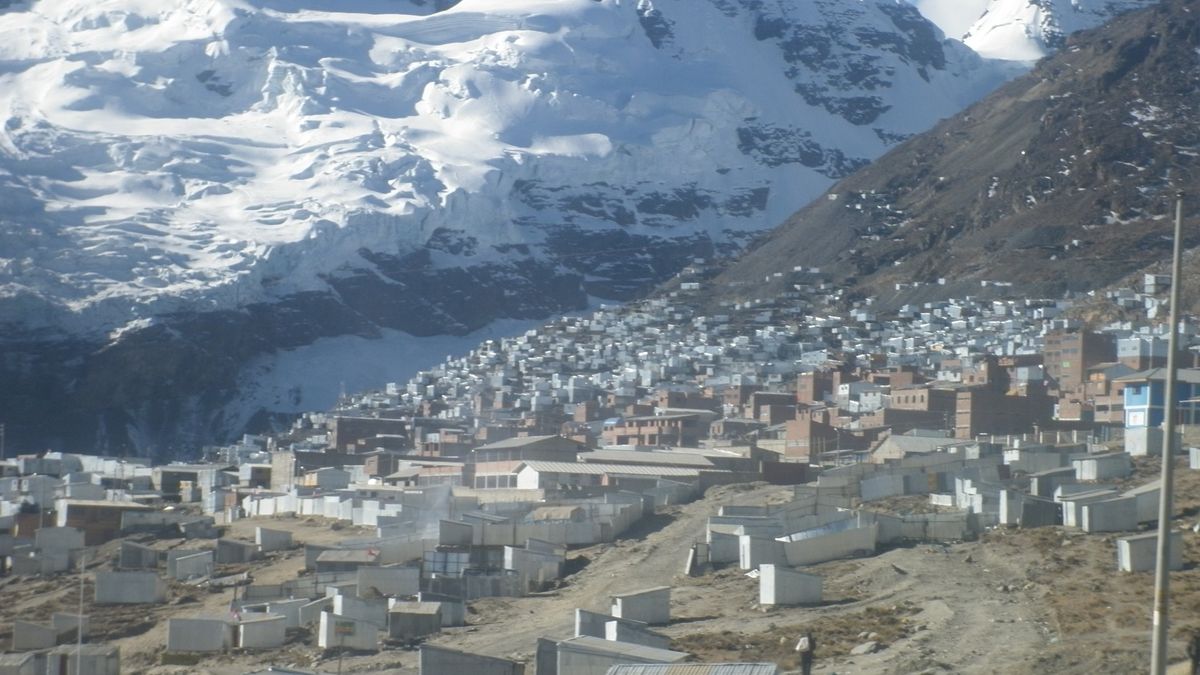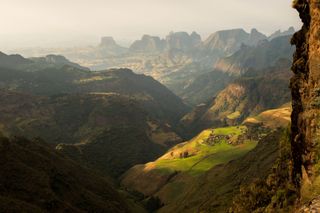What's the highest place on Earth that humans live?
Inhabitants of the world's highest settlement, La Rinconada, in the Peruvian Andes, face a unique set of challenges.

Worldwide, more than 80 million people live at least 8,202 feet (2,500 meters) above sea level, mainly in South America, Central Asia and East Africa.
Some of the highest permanent settlements include Wenquan in China's Qinghai province, at a staggering 15,980 feet (4,870 m) above sea level, and Korzok in India, around 15,000 feet (4,572 m) above sea level.
However, one place towers above them all. Nestled in the Peruvian Andes is a town that is nicknamed "Devil's Paradise." Officially named La Rinconada, its 50,000 inhabitants live between 16,404 feet (5,000 m) and 17,388 feet (5,300 m) above sea level, making it the highest permanent settlement on Earth.
Life in La Rinconada is extremely difficult. There is no running water, sewage system or garbage disposal. Food is imported from lower altitude regions and electricity was only installed in the town in the 2000s.
The town is known for gold mining, having started out as a temporary mining settlement more than 60 years ago. But the price of gold is that inhabitants must live in extreme conditions with up to half the oxygen pressure that exists at sea level.
Related: Why is Mount Everest so deadly?
Mountain sickness
If you were not born at high altitude and ventured to altitudes like that of La Rinconada, one of the first changes that you'd notice is your breathing rate and heart rate going up. This is because less oxygen is available in the air, so the lungs and heart need to work harder to nourish tissues.
"By the time you're at about 4500 meters [14,763 ft], the same breath of air that you take here [at sea level] has about 60% of the oxygen molecules, so that's a big stress," Cynthia Beall, a professor emerita of anthropology at Case Western Reserve University in Ohio, told Live Science.
At first, the percentage of hemoglobin — the protein within red blood cells that carries oxygen — in the blood would also plummet, Beall said. The higher the altitude, the stronger all these responses would be, she said.
Some people may develop a condition called acute mountain sickness (AMS) as the body tries to adjust to lower oxygen levels. This can cause symptoms such as headaches, fatigue, nausea and a loss of appetite.
Usually after about a week or two at high altitude, a person's heart rate and breathing will quieten down slightly as the body begins to make more red blood cells and hemoglobin to compensate for the low oxygen levels in the air, Beall said.

Adapting to altitude
However, highlanders, like those living in La Rinconada, have seemingly adapted to low-oxygen environments in many ways.
"There's pretty good evidence from around the world that there are either slight or very large increases in lung volume for people who are exposed to high altitude, particularly before adolescence," Beall said.
Andean highlanders, for example, generally have a high concentration of hemoglobin in their blood which makes their blood thicker. While this allows Andeans to carry more oxygen in their blood, it also means that they are vulnerable to developing a condition called chronic mountain sickness (CMS). This occurs when the body produces an excessive amount of red blood cells.
CMS can happen to people who live at altitudes higher than 10,000 feet (3,050 m) for many months or years and causes symptoms such as fatigue, shortness of breath and aches and pains. Around one in four people in La Rinconada are estimated to suffer from CMS.
The best treatment for CMS is to go to a lower altitude, Tatum Simonson, an associate professor of medicine at the University of California, San Diego, told Live Science. However, this isn't always a viable solution if someone has their whole livelihood in a particular region, she said. Regular bloodletting and taking a drug called acetazolamide, which reduces red blood cell production, may provide some relief for patients with CMS, although the safety and efficacy of these treatments in the long run is still unknown.
Tibetan highlanders, on the other hand, despite also living at high altitudes, don't have elevated hemoglobin concentrations and are therefore at low risk of developing CMS. Instead, they're believed to have adapted to low-oxygen environments by having a higher blood flow through their body, Beall said.
Specifically, Tibetans carry a mutation in a gene called EPAS1 that lowers the amount of hemoglobin in the blood. This mutation is believed to have been inherited from our extinct human cousins, the Denisovans. Mutations in EPAS1 have also recently been found in a group of Andean highlanders, which scientists are now trying to investigate further.
Sign up for the Live Science daily newsletter now
Get the world’s most fascinating discoveries delivered straight to your inbox.

Emily is a health news writer based in London, United Kingdom. She holds a bachelor's degree in biology from Durham University and a master's degree in clinical and therapeutic neuroscience from Oxford University. She has worked in science communication, medical writing and as a local news reporter while undertaking NCTJ journalism training with News Associates. In 2018, she was named one of MHP Communications' 30 journalists to watch under 30. (emily.cooke@futurenet.com)












